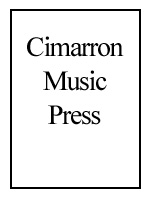Gulino, Frank Concert Caprices (6)
Trombone Duets

-
Gulino, Frank
Concert Caprices (6) [low brass duet]
This duet book present six duets, each in a low key and a high, and each can be played by various combinations of low brass instruments.This book seeks to provide low brass players with useful, enjoyable materials that can be used effectively as both pedagogical tools and performance pieces. By incorporating a variety of keys, articulations, meters, phrase structures, and styles, these duets present countless opportunities for musical and technical development without feeling so exercise-like as to preclude them from having a place on recital programs.
While thinking about this project, I received a number of messages from tubists, euphoniumists, and trombonists_performers and pedagogues alike_lamenting the various challenges they face when searching for duet literature. For example, trombonists looking for materials to play alongside their tuba students face a dilemma: most tuba duets are too low for the trombone, while most trombone duets are too high for the tuba. Others remarked that some tuba duets ignore the upper tessitura, making them unhelpful to players looking to build range and facility, or pointed out that many trombone duets are either musically fulfilling or technically accessible to non-professional players, but not both. The quality of low brass duet literature also varies widely, with little overlap between works that make useful teaching tools and those which are musically compelling enough to perform.
To address some of these issues, the duets in this book present a variety of technical challenges without losing sight of the importance of sound, pitch, phrasing and musicianship. Whether addressing technical issues like range, articulation, or velocity, each piece also requires that players pay attention to style, tone production, and ensemble playing. Moreover, each duet appears in two different keys, separated variously by a perfect fourth, tritone, or perfect fifth in order to avoid extremeranges or particularly unwieldy key signatures. This allows players to learn each piece in the more comfortable tessitura first (tuba players beginning with the lower-keyed version, for instance), empowering them to subsequently approach the more challenging tessitura already armed with a musical plan of attack and command of the melodic lines and intervals.
Although some of the pieces in this book will undoubtedly be more or less challenging than others, depending on the combination of instruments and experience levels possessed by the performers, the hope is that each one adds value by providing opportunities to hone our musical and technical skills, allowing teachers to perform alongside their students, or allowing students to play with one another. I am grateful to all of those who reached out with thoughts about this project and hope you enjoy these Six Concert Caprices -the publisher
-
- Category: Trombone Duets
- Item: 128013
- Grade/Level:
- Price: $20.00
-
(usually ships in 24 hours)
